Egypt Magic [1521]
Block statues
They are statues representing people sitting cross-legged wearing knitted robes covering most parts of the body, and they are in a hiding position closer. We find that in the early Middle Kingdom, the robes that a person was wearing did not cover most parts of the body, so some parts appeared, such as feet and legs, and later in the ends of the Middle Kingdom and the beginnings of the state, The modern body has become completely wrapped in the knit raa or the cloak, so the artist can use the spaces of the robe to write some names and titles of the statue’s owner and phrases urging visitors to pray for the owner of the statue.
The beginning of its appearance:
For the first time in the Old Kingdom, these statues appeared, where an inscription representing one of these statues was found. This inscription was among the scenes of the pilgrimage to Abydos. It was in a position called “squatting”, and we find that this situation represents the closest situation in the Egyptian civilization that is the closest to devotion to devotion. We find it during The Middle Kingdom appeared in statues and became widespread in the New Kingdom and beyond.
Its goal:
The purpose of placing these statues in abundance in temples was to receive invitations in the name of their owners from the visitors hoping that the deceased’s soul would receive the largest number of invitations from the visitors of the cemetery to help him overcome the difficulties of the other world. The squatting position in it is worship and reverence for the owner of the place or the temple that is the god. Often, the artist also used the spaces of the robe to engrave the names and titles of the deceased and his works if space expanded, and perhaps the artist in this way that the robe covers most of the body of the deceased except for his head makes it clear that the deceased is as if he was at the moment of birth in the other world, as the first From the moment the child is born, his head appears. He paid more attention to the face features so that the soul could be easily guided to him and be resurrected in the next world.
We find that the shape of the block itself does not have a hollow, so it is not easily broken, especially when it is placed in places where there are frequent visits, such as the temple; perhaps the intention was also to increase the durability and solidity of the statue and thus work to preserve the statue and the immortality of the deceased accordingly.
Its placement:
These statues were found in abundance in the temple in various places and sometimes in a small number in the western wall of some tombs.
Their names:
It has several names of the most famous: Block statues, Squat statues, Apron statues, Sitting statues, Cube figurines, Hump statues.
Model
– A statue of Senusret Snape FNE
Quartz
– 86.6 cm high (68.6 x 41.9 x 48.3 cm)
Brooklyn Museum
This statue belongs to Senusret, one of the nobles of the Middle Kingdom, especially the late 12th Dynasty, perhaps from the reign of King Senusret III or his successor, Amenemhat III, and the statue’s owner appears in the official body, where he wears a wig of medium length with a rounded bottom, and includes his legs to his chest and straightens his arms On her, he wears an interwoven robe that wraps most parts of his body, leaving only the feet visible. The artist took advantage of the spaces of the robe and inscribed on him the names and titles of the statue’s owner. We find he begged the deity “Ptah Sukkar” in the inscriptions, and the features of his face follow the southern Tayyibi school. Itneferuseneb is between his feet in a small size, and the inscriptions did not indicate the woman’s relationship to the owner of the statue. Still, this shape was common among husbands, and this is not an underestimation of his wife’s appearance between his feet with the size of a sir. Still, it is an honour and honour for her, where the husband wants to send with him In the other world, accompanying him, and appearing as if he was surrounding her and working to protect her. The wife wears a long, narrow knit robe that shows the details of the body from below and a long hair wig and features a realistic figure that also belongs to the Southern School. The statue expresses The spread of the idea of statues block in the era of the Middle Kingdom.
Block statues:
They are statues representing people sitting cross-legged wearing knitted robes covering most parts of the body, and they are in a hiding position closer. We find that in the early Middle Kingdom, the robes that a person was wearing did not cover most parts of the body, so some parts appeared, such as feet and legs, and later in the ends of the Middle Kingdom and the beginnings of the state, The modern body has become completely wrapped in the knit raa or the cloak, so the artist can use the spaces of the robe to write some names and titles of the statue’s owner and phrases urging visitors to pray for the owner of the statue.
The beginning of its appearance:
For the first time in the Old Kingdom, these statues appeared, where an inscription representing one of these statues was found. This inscription was among the scenes of the pilgrimage to Abydos. It was in a position called “squatting”, and we find that this situation represents the closest situation in the Egyptian civilization that is the closest to devotion to devotion. We find it during the Middle Kingdom appeared in statues and became widespread in the New Kingdom and beyond.
Its goal:
The purpose of placing these statues in abundance in temples was to receive invitations in the name of their owners from the visitors hoping that the deceased’s soul would receive the largest number of invitations from the visitors of the cemetery to help him overcome the difficulties of the other world. The squatting position in it is worship and reverence for the owner of the place or the temple that is the god. Often, the artist also used the spaces of the robe to engrave the names and titles of the deceased and his works if space expanded, and perhaps the artist in this way that the robe covers most of the body of the deceased except for his head makes it clear that the deceased is as if he was at the moment of birth in the other world, as the first thing At the moment of his birth, his head appears from the child. He paid more attention to the face features so that the soul could be easily guided to him and resurrected in the afterlife.
We find that the shape of the block itself does not have a hollow, so it is not easily broken, especially when it is placed in places where there are frequent visits, such as the temple; perhaps the intention was also to increase the durability and solidity of the statue and thus work to preserve the statue and the immortality of the deceased accordingly.
Its position:
These statues were found in abundance in the temple in various places and sometimes in a small number in the western wall of some tombs.
Their names:
It has several names of the most famous: Block statues, Squat statues, Apron statues, Sitting statues, Cube figurines, Hump statues.
Model
– A statue of Senusret Snape FNE
Quartz
86.6 cm high (68.6 x 41.9 x 48.3 cm)
Brooklyn Museum
This statue belongs to Senusret, one of the nobles of the Middle Kingdom, especially the late 12th Dynasty, perhaps from the reign of King Senusret III or his successor, Amenemhat III, and the statue’s owner appears in the official body, where he wears a wig of medium length with a rounded bottom, and includes his legs to his chest and straightens his arms On her, he wears an interwoven robe that wraps most parts of his body, leaving only the feet visible. The artist took advantage of the spaces f the robe and inscribed on him the names and titles of the statue’s owner. We find he begged the deity “Ptah Sukkar” in the inscriptions, and the features of his face follow the southern Tayyibi school. Itneferuseneb is between his feet in a small size, and the inscriptions did not indicate the woman’s relationship to the owner of the statue. Still, this shape was common among husbands, and this is not an underestimation of his wife’s appearance between his feet with the size of a sir. Still, it is an honour and honour for her, where the husband wants to send with him In the other world, accompanying him, and appearing as if he was surrounding her and working to protect her. The wife wears a long, narrow knit robe that shows the details of the body from below and a long hair wig and features a realistic figure that also belongs to the Southern School. The statue expresses The spread of the idea of statues block in the era of the Middle Kingdom.

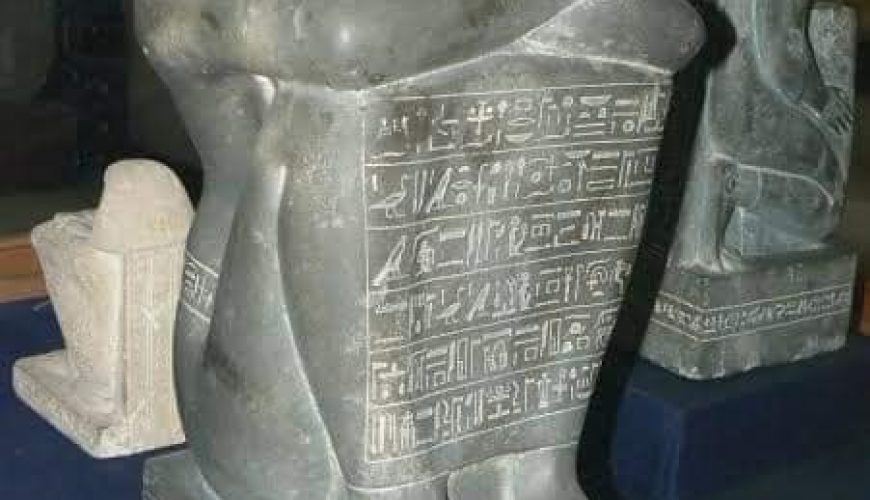
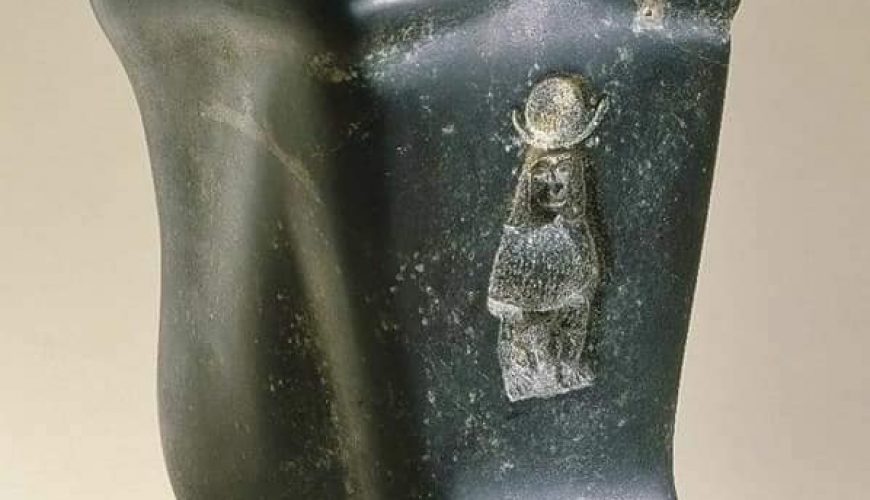



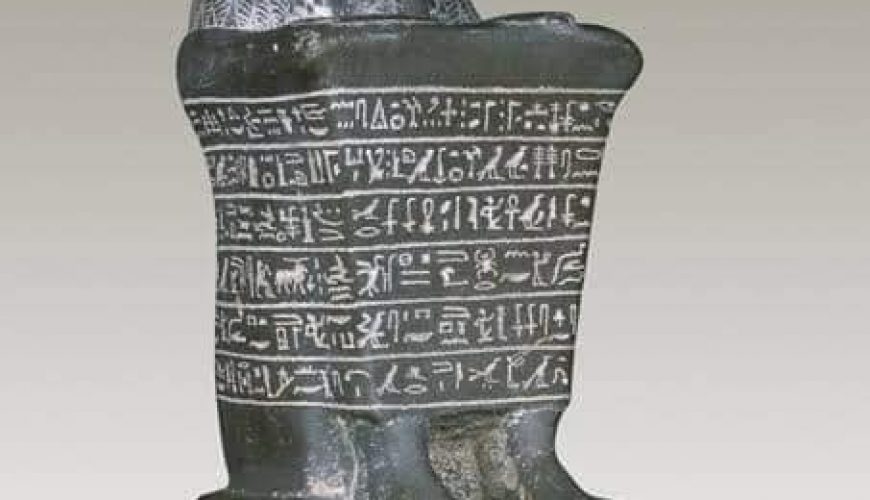

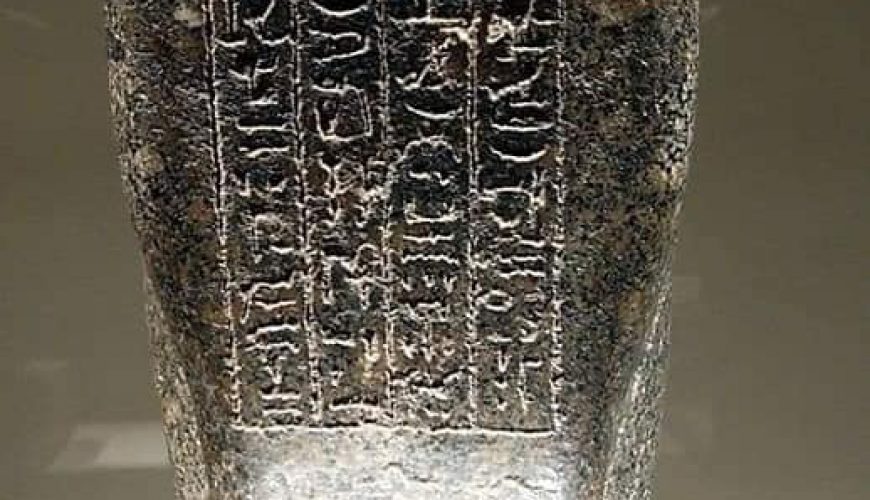

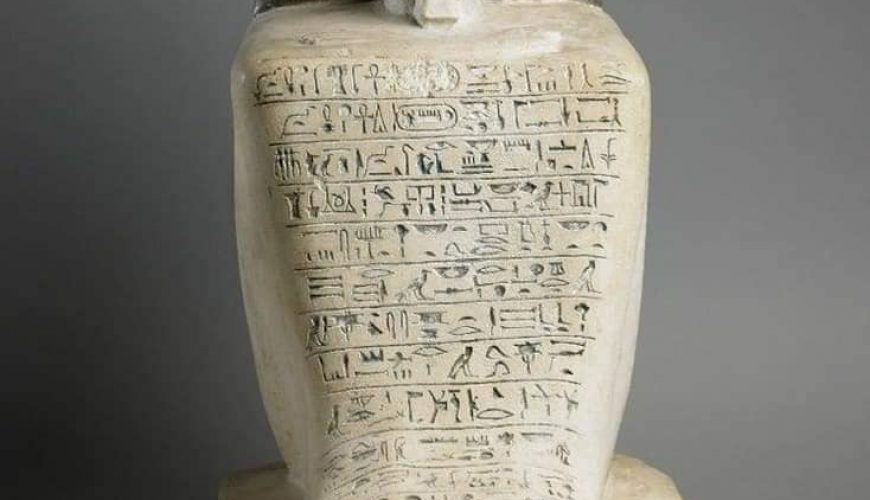
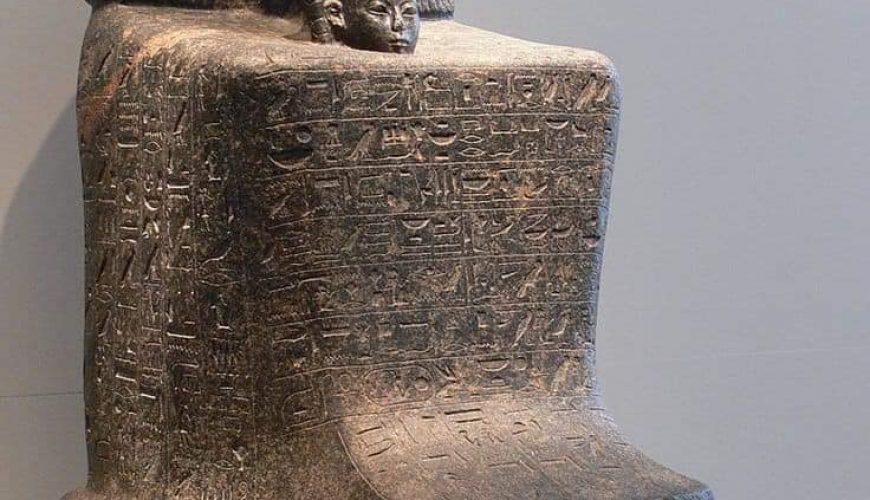
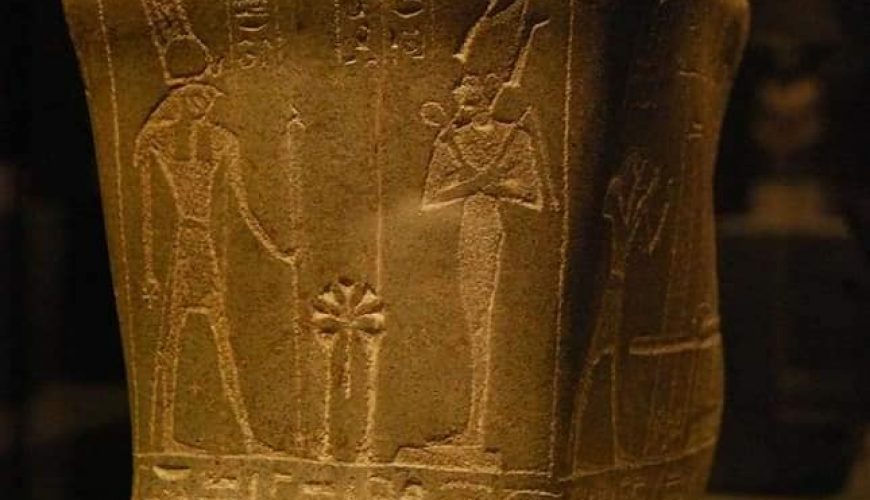
Comment (0)